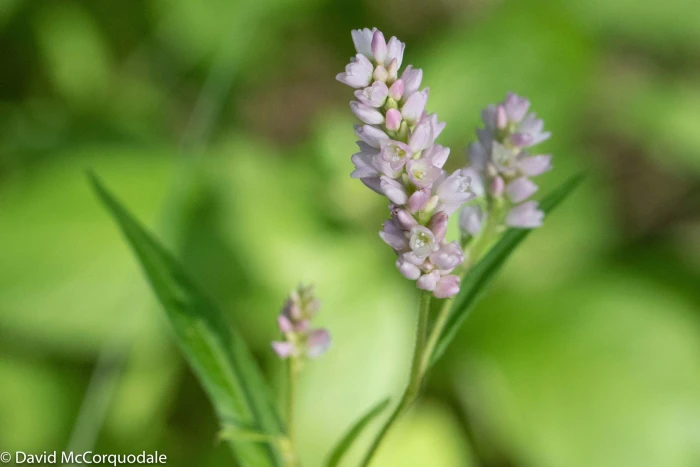Pennsylvania Smartweed
(Persicaria pensylvanica)
Pennsylvania Smartweed (Persicaria pensylvanica)
/
/

David McCorquodale
CC BY 4.0















































Estimated Native Range
Climate Requirements for Prattville, Alabama
| This Plant | Your Site | Plant Suitability for Your Location | ||
|---|---|---|---|---|
| • Precipitation | 3" - 99" | 55" | Aquatic | Aquatic |
| • High Temp. | 62°F - 107°F | 92°F | Your summer temperatures are normal for this plant. | Excellent |
| • Low Temp. | -15°F - 67°F | 36°F | Your winter temperatures are normal for this plant | Excellent |
Summary
Pennsylvania Smartweed is valued for its wildlife benefits, as it provides food for waterfowl and cover for small animals. It is often used in wetland restoration projects and can be found in rain gardens or as a part of naturalized plantings. In cultivation, it prefers full sun but can tolerate part shade, and it thrives in moist to wet soils with varying drainage. While it is not commonly used in formal garden settings due to its aggressive self-seeding, it can be a useful plant for erosion control on water edges. Gardeners should be aware that it can become invasive and may require management to prevent unwanted spread.CC BY-SA 4.0
Plant Description
- Plant Type: Herb
- Height: 0.5-6 feet
- Width: 0.2-0.4 feet
- Growth Rate: Moderate
- Flower Color: Pink, White
- Flowering Season: Summer, Fall
- Leaf Retention:
Growth Requirements
- Sun: Full Sun
- Water: Medium
- Drainage: Slow, Medium, Fast
Common Uses
Bee Garden, Bird Garden, Butterfly Garden, Low Maintenance, Rock Garden, Water Garden
Natural Habitat
native to a wide range of wetland habitats including marshes, stream banks, and moist fields across North America and Cuba
Other Names
Common Names: Pennsylvania Knotweed, Pink Knotweed, Pinkweed, Renouée De Pennsylvanie, Amerikaans Perzikkruid, Kvarnpilört
Scientific Names: Persicaria pensylvanica, Polygonum pensylvanicum, Polygonum pensylvanicum var. laevigatum, Polygonum pensylvanicum f. pallescens, Polygonum pensylvanicum var. durum, Polygonum pensylvanicum var. eglandulosum, Polygonum pensylvanicum var. nesophilum, Polygonum pensylvanicum var. rosaeflorum, Persicaria pensylvanica var. laevigata
GBIF Accepted Name: Persicaria pensylvanica (L.) M.Gómez